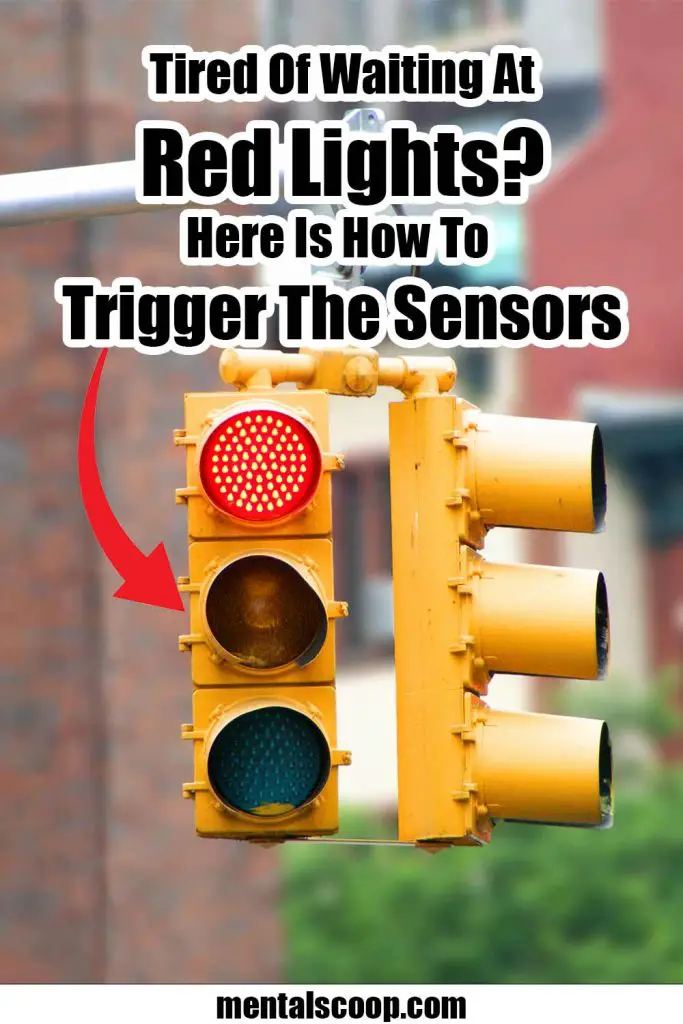Tired Of Being Stuck At Traffic Lights? Here Is How To Trigger The Sensors!

Are you tired of the never-ending wait at traffic lights? We’ve all been there – stuck in traffic, seemingly forever, as the traffic lights refuse to budge. But fear not, there are ways to tip the odds in your favor! In this article, we’ll delve into the world of traffic light sensors and explore effective techniques to trigger them. Say goodbye to those frustrating moments of waiting and hello to smoother journeys!
Understanding Traffic Light Sensors
Before we dive into the techniques, let’s understand what traffic light sensors are. Traffic light sensors are devices embedded in the road or placed on poles near intersections. These sensors detect the presence of vehicles and pedestrians, allowing traffic signals to adjust their timing accordingly.
They play a crucial role in optimizing traffic flow and reducing congestion.
The Science Behind the Sensors
Traffic light sensors primarily use two technologies: inductive loop sensors and video detection systems. Inductive loop sensors are coils of wire placed beneath the road’s surface. When a vehicle passes over them, it disrupts the magnetic field, triggering the signal change.
Video detection systems, on the other hand, use cameras to monitor traffic and make signal adjustments based on real-time data.
Identifying Sensor-Equipped Lanes
Not all lanes have sensors, so positioning yourself in the right lane is crucial. Look for markings on the road’s surface – rectangular or circular patterns – indicating the presence of sensors.
Generally, these markings are located a few feet before the stop line. Position your vehicle’s front wheels over these markings for optimal sensor detection.
Sensing Vehicle Weight
Inductive loop sensors rely on changes in magnetic fields. Larger vehicles have a stronger impact on the magnetic field, increasing the likelihood of triggering the sensor.
If you’re in a smaller vehicle, try to position it near the center of the loop to maximize your chances of detection.
Playing the Waiting Game
Sometimes, patience is key. If you’re the first vehicle in line, give the sensors a moment to detect your presence. Some systems have a slight delay before registering a stationary vehicle. Avoid excessive lane-switching, as it can confuse the system and lead to longer waits.
Utilizing Vehicle Movement
Sensors are designed to detect movement. Creep your vehicle slightly forward and backward within the sensor-equipped zone. This movement can help trigger the sensor, as the change in magnetic field becomes more pronounced.
Optimal Stopping Position
Stopping directly over the sensors’ markings is crucial. If you stop too far forward, the sensor might not detect you. Aim to position your vehicle’s front wheels just before or directly over the markings, ensuring maximum sensitivity.
Timing Your Approach
Approach the intersection at a moderate speed. If you’re driving too fast, the sensors might not have enough time to register your presence. Aim for a steady approach to increase the chances of triggering the sensors.
Motorcycle and Bicycle Tips
Motorcycles and bicycles have smaller profiles, making sensor detection a bit challenging. To improve your odds, try placing your vehicle closer to the center of the sensor markings. Some intersections also have dedicated buttons for cyclists and motorcyclists to manually trigger the signal change.
Avoiding Large Gaps
When waiting in a line of vehicles, avoid leaving large gaps between you and the car in front. These gaps can cause the sensor to think that the lane is empty, potentially leading to signal skipping. Maintain a reasonable following distance to ensure consistent sensor activation.
Weather and Sensor Performance
Weather conditions can affect sensor performance. Rain, snow, and ice can obstruct the sensors or dampen their sensitivity. In such cases, slightly adjust your positioning over the markings or use the slight vehicle movement technique to enhance sensor detection.
Reporting Non-Responsive Sensors
If you consistently experience issues with specific traffic light sensors, consider reporting them to the local transportation department. Malfunctioning sensors can disrupt traffic flow and lead to unnecessary delays for many drivers. Your input can contribute to more efficient traffic management.
Future of Traffic Management
Advancements in technology are paving the way for smarter traffic management systems. Many cities are adopting adaptive signal control technology that uses real-time data to adjust traffic signal timing dynamically.
These systems aim to reduce congestion, improve air quality, and enhance overall transportation efficiency.

More interesting articles you may be interested in reading:

How To Remove A Tree Stump Painlessly
10 Vital Home Maintenance Tasks You’ll Regret If You Forget
See How Much Propane Is Left In A Tank With No Gauge
Thanks for reading and be sure to share this info with your friends using the social share buttons below.
Talking about social stuff, consider liking our Facebook page to keep up to date with our articles. Check out our other articles for more mental scoops!
